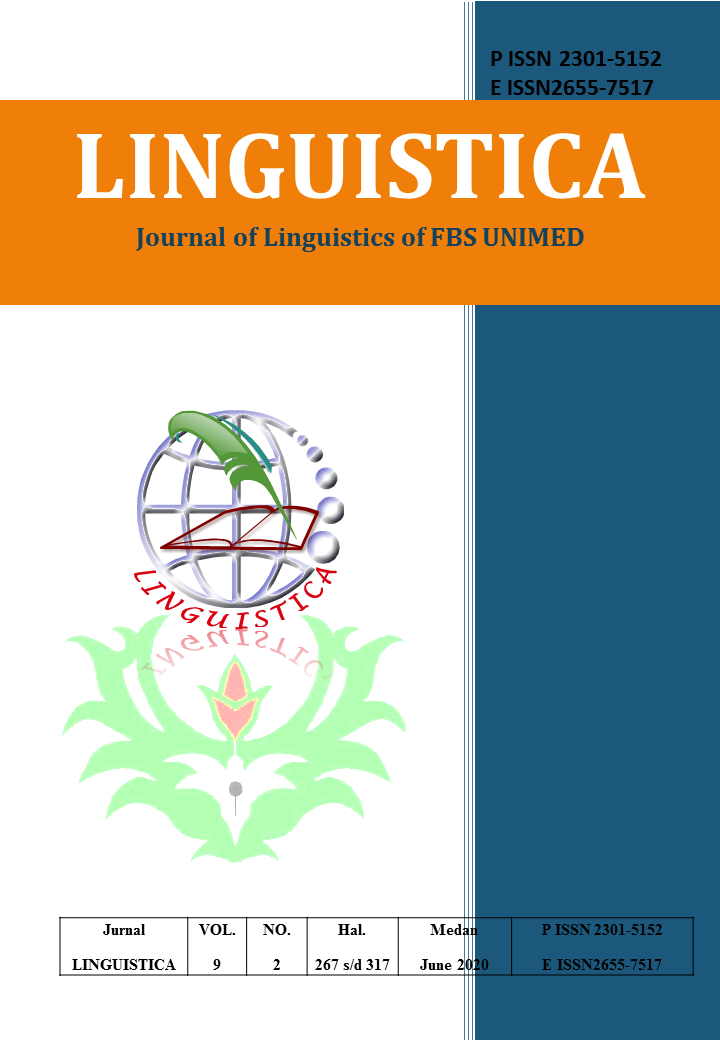THE COMMUNICATIVE FUNCTIONS OF ULAON POGU NI ALAMAN IN EXHUMATION (MANGONGKAL HOLI) A FUNERAL CEREMONY IN TOBA BATAK
DOI:
https://doi.org/10.24114/jalu.v9i2.18947Abstract
This research focused on communicative functions used in Ulaon Pogu ni Alaman in Exhumation (Mangongkal Holi) at funeral ceremony in Toba Batak. This research was conducted by applying descriptive qualitative method. The data were collected from the transcript utterances of Ulaon Pogu ni Alaman at funeral ceremony in Toba Batak. The findings of the study show that there are 100 utterances which consist of six communicative functions which is referential, emotive, poetic, conative, phatic, and metalinguistic. The most dominant type of communicative functions used in Ulaon Pogu ni Alaman in Exhumation (Mangongkal Holi) at funeral ceremony in Toba Batak is referential function. It means that the communication used in Ulaon Pogu ni Alaman intended to establish the description and contextual information that happened on that day. Keywords: communicative functions; Batak Toba; funeral ceremony; Ulaon Pogu ni Alaman.Downloads
Published
2020-07-03
Issue
Section
Articles
License
Copyright (c) 2020 OSTI ELISABETH SIMANJUNTAK, Lidiman Sahat Sinaga, Syamsul Bahri

This work is licensed under a Creative Commons Attribution-ShareAlike 4.0 International License.
Authors who publish with this journal agree to the following terms:
- Authors retain copyright and grant the journal the right of first publication with the work simultaneously licensed under a Creative Commons Attribution License that allows others to share the work with an acknowledgment of the work's authorship and initial publication in this journal.
- Authors are able to enter into separate, additional contractual arrangements for the non-exclusive distribution of the journal's published version of the work (e.g., post it to an institutional repository or publish it in a book), with an acknowledgment of its initial publication in this journal.
- Authors are permitted and encouraged to post their work online (e.g., in institutional repositories or on their website) prior to and during the submission process, as it can lead to productive exchanges, as well as earlier and greater citation of published work (See The Effect of Open Access).
- This work is licensed under a Creative Commons Attribution-ShareAlike 4.0 International License.

